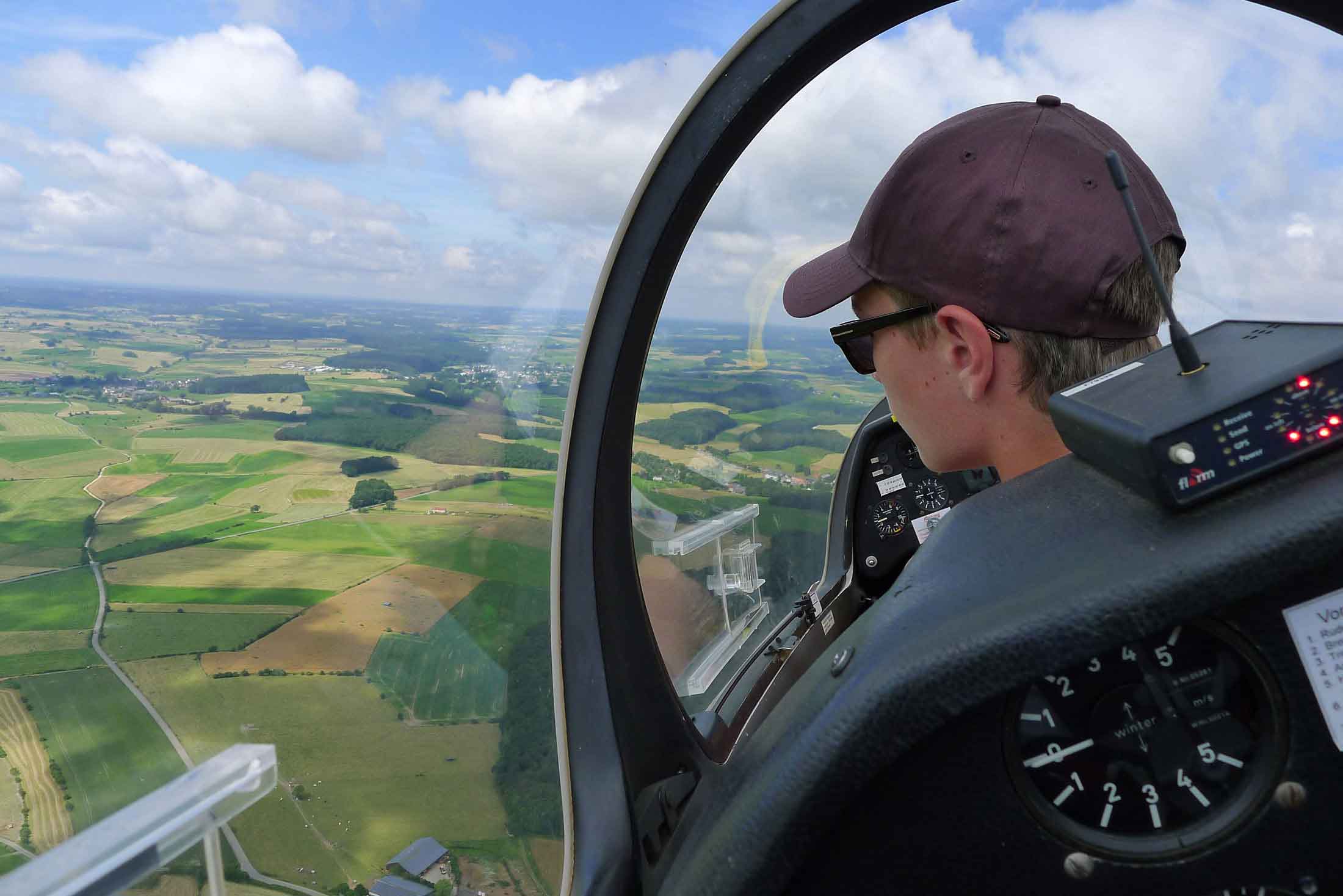Detailled description of our flight training
Information on becoming member of the CLVV and the flight training
Sum up of the mandatory steps :
Step 1 : Attendance at a 1day trial course/training at the CLVV
(Why : Get in touch with our club, give the candidate an idea of the activities and training procedures. The decision of membership-admission by the board is based on this course.
(In case you become member of the CLVV the fees payed for the trial course will be credited to your pilots account)
Step 2 : Membership application
The application is done by the form available on clvv.lu (Our club / becoming member). A parental autorisation is necessary for minor applicants
Step 3 : Admission by the CLVV board
The CLVV board will decide the admission during the next monthly meeting, decsion based on the advice of the trial course instructor. The candidate will recieve his confirmation mail as well as the login information for the internal part of the website.
The admission will be official after the payment of 1100€ including :
- Yearly member fee 350€
- Non-reimbursable advance of 400€, credited on your pilots account to cover the flight fees (as 400€ are the minimum flight fees to be used by the pilot per season)
- unique admission fee 350€ (including the training kit)
The candidate will recieve a « training kit » (Manuel du Pilote Vol à Voile, Progression sheet, his flight log and his winch training log.
Step 4 : Self-studying of basic flight theory by the the candidate before the beginning of the flight instruction.
This step aims to prepare the student to be familiar with basic axpressions, procedures and rules to participate in our activities. Mandatory documents to read:
- CLVV – Manuel de service (*)
- Phases 1,2 et 3 du Manuel du Pilote Vol à Voile
- PowerPoint show « Kleinlöschgeräte“ (*)
* available on our website (clvv.lu / members access / documents / documents formation obligatoire)
The CLVV instructors are available to assist the the candidates in their theoretical preparation.
Etape 5 : Achievment of the internal theoretical test (Multiple Choice, 14 questions)
This test, based on the documents listed above will take maximum 30 min and can be accomplished at latest in the morning of the 1. flight instruction day. The test form has to be handed out to the head of training. In case of failure, the candidate has the opportunity to retry the test an the folloing Weekend, the successfull achievment is mandatiry to continue with the flight training.
Step 6 : Flight training
Flight training is performed mainly on our doubleseaters (ASK21 and G103). The average number of training flights before your first solo flight is between 60 an 100 flights
The students progression is documented by a "Progression sheet" whis is the proprety of the student until his 1. solo flight. The student is responsible to bring along the sheet for every instruction session and to ask the instructor to record all the training exercice/progress on the sheet at the end of the training day.
Step 7 : "Winch driver" training
Paralell to the flight training, the student will be trained to operate the winch. This traing has to be accomplished (an certified) before the first solo flight.
Step 8 : First solo flight
Before performing his first solo flight, the student has to hand out his medical certificate to the head of training.
The training is considered to be accompshed when all the items of the progression sheet are ticked by the instructors (except airtow (phase 3) , spin (phase 9) and the "powered glider" part
The student will sign the progressin sheet to confirm he has accomplished all the elements of the sheet.
At least 2 instructors will verify the sheet and sign the part "Before Solo" at the backside and handout the sheet to the head of training or his deputy.
The head of training (or his deputy) will verify if all conditions are fullfiled and autorize the solo flight
Step 9 : Continuation of the flight training
Tous les vols effectués par l’élève se feront sur l’accord et sous la surveillance d’un instructeur. La progression sur d’autres planeurs se fera sur base du plan de formation.
Step 10 : Theoretical training
The theoretical training is based on the french nanual ‘Manuel du Pilote de Vol à Voile’ édited by the frensh Ministry of transport and the Private pilots manual "Manuel du Pilote Privé (partie réglementation et espaces aériens)
Pursuant english documentation and manuals can be recommended by the CLVV on request
The CLVV board and the instructors will organize, if deemed necessary, theoretical courses. (held by CLVV members, internal or external instructors).
A specific (mandatory) course concerning the luxembourg airspace will also be organized.
The mandatory training « Glider Sectors CLVV Briefing » has to be accomplished before the practical exam.
Step 11 : The Sailplane pilots licence (LAPL(S) (Light Aircraft Pilot Licence – Sailplane)
The conditions and tests are laid down in the COMMISSION REGULATION (EU) No 1178/2011
Before applying for the flight test (practical exam) for the licence or rating the candidate has to have accomplished the theoretical exam.
FCL.110.S LAPL(S) — Experience requirements and crediting
(a) Applicants for an LAPL(S) shall have completed at least 15 hours of flight instruction in sailplanes, or powered sailplanes, including at least:
(1) 10 hours of dual flight instruction;
(2) 2 hours of supervised solo flight time;
(3) 45 launches and landings;
(4) 1 solo cross-country flight of at least 50 km (27 NM) or 1 dual cross-country flight of at least 100 km (55 NM).
After this basic training to the first licence, the candidate can continue his training to get ratings for airtow, self-launch, motoglider (TMG- Touring Moto-Glider), instructorr ou aerobatics.




